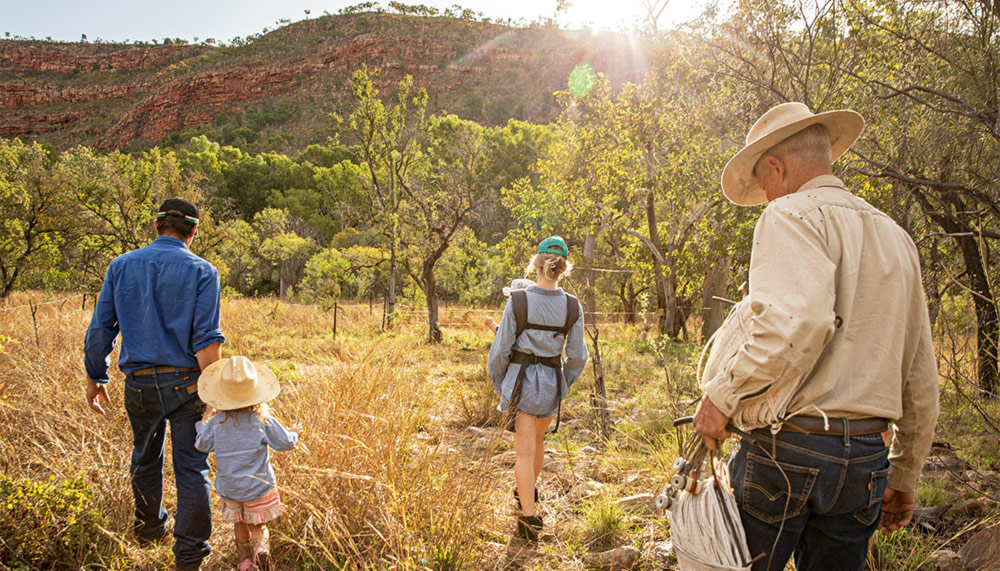The Henggeler family has dedicated a lifetime to regenerative pastoral practices on Kachana station.
Story + Photos Nathan Dyer
Crimson finches chatter in the trees and water gushes in a nearby creek as Chris Henggeler wades through waist-high grass on Kachana station. Although well into the dry season, the temperature here, beneath the towering ramparts of the Durack Range, still hovers above 30°C.
Stepping into the shade of paperbarks on the banks of Cockatoo Creek, Chris pauses to take in a sudden change in atmosphere. “Feel that,” he says, grinning as he leans down to dig up a square of topsoil with his pocketknife. Here, among the richness of Kachana’s intensively managed regenerative agriculture plot, the air is noticeably cooler.
But it’s not just the shade from the melaleucas that’s causing the temperature drop. Beneath the grass, the soil itself is cool. “That’s what you call climate change,” Chris laughs, holding a small square of chocolate brown topsoil covered by an inch-thick matt of mulch. “By looking after our soils, we can rebuild our ecosystems and build real wealth.”
Covering 77,500ha and nestled within the deep red folds of the East Kimberley, 120km south-west of Kununurra, this is not a ‘normal’ cattle station. No roads lead to Kachana and for the past 30 years the property has not turned off a single commercial animal. Instead, the Henggelers have focussed on building a different kind of wealth.
“Carbon is nature’s cash,” Chris says, walking back to the homestead. “And our cattle are worth more to us as a land management tool than they are over the hook,” he says. “The industry wants fat cattle, but to do that you need a fat landscape, you need fat grasses and you need fat soils."
This story excerpt is from Issue #144
Outback Magazine: August/September 2022










